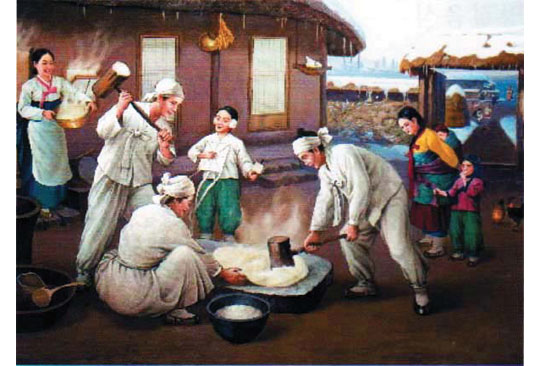Lunar New Year Celebration
The lunar New Year’s Day is the reminder for everybody giving hope and recalling the past. Besides, if you are far away from the native place it recalls dear home and lunar New Year’s festive dishes of your overcautious mother.
From the past our ancestors spent the lunar New Year’s Day as the biggest folk holiday. With the approach of the lunar New Year’s Day, every house prepared for it especially for the lunar New Year’s festive dishes. Custom of preparing the lunar New Year’s festive dishes has a long history. People sat up all night on the lunar New Year’s Eve. They made foods without sleeping all night “doing suse” (protecting the lunar New Year’s Day).
The lunar New Year’s Day was in festival atmosphere from dawn. It was called “sejang” for wearing new clothes on the lunar New Year’s Day, “charye” for the ancestor-memorial services, “sebe” for the formal bow of respect to elders, “sechan” for the dishes and “seju” for the wines.
The Lunar New Year’s Day dishes were particular and there were rice cake (fancy rice cake, glutinous rice cake, steamed rice cake), rice-cake soup, mung-bean pancake, broth, shish kebab, roast meat, pop-rice cake, cake made from wheat-flour, fruit punch made of honey, sweet drink made from fermented rice (drink) and wine and fruits, etc.
Folk games like yut game, seesaw, kite-flying, sleigh-riding, top spinning, toy pinwheel game were enjoyed on the lunar New Year’s Day.
The lunar New Year celebration is registered as the State Intangible Cultural Heritage.
Dr. Ri Sun Hui, Researcher of Korean Folklore Museum
